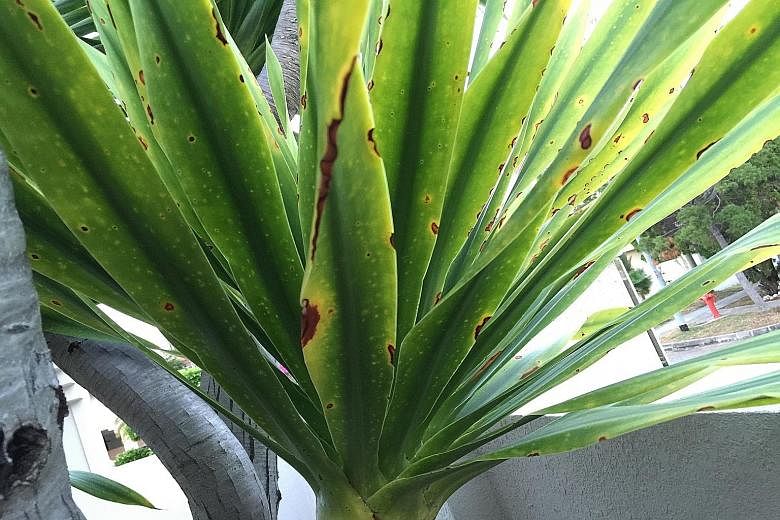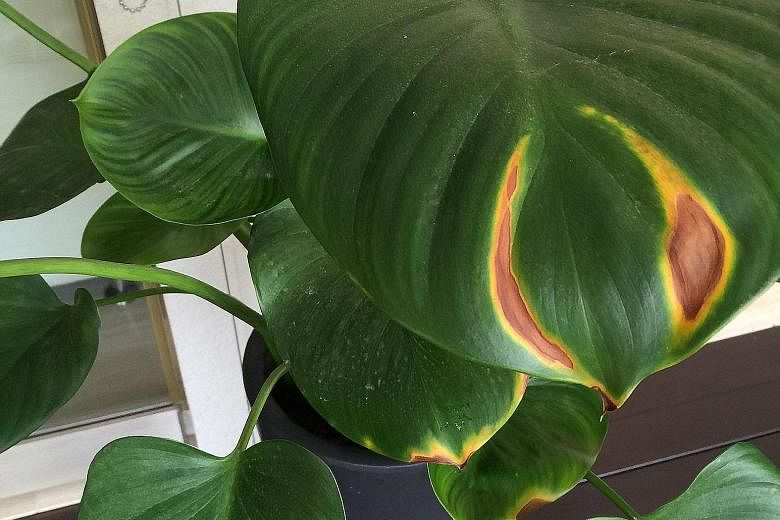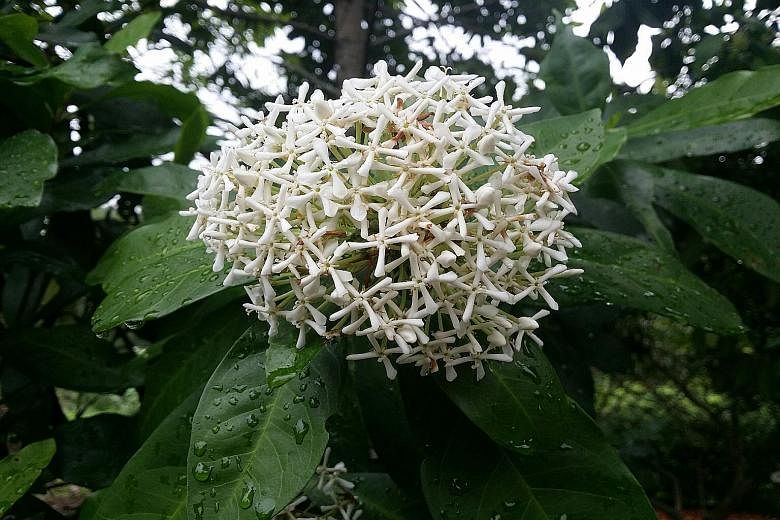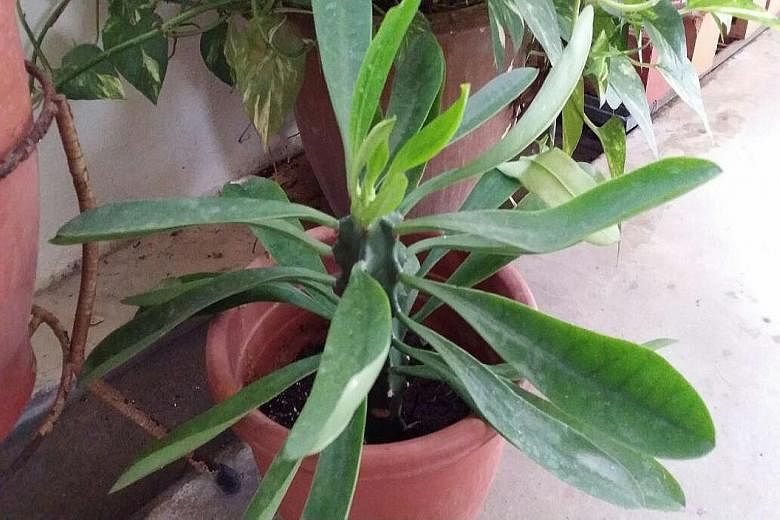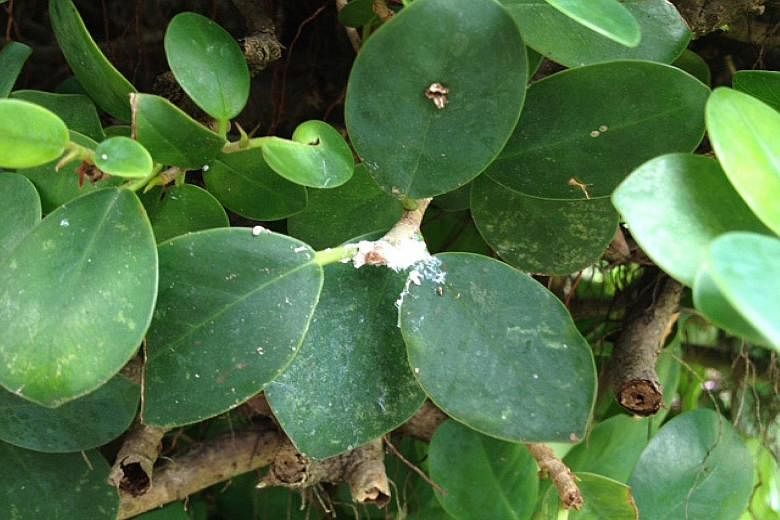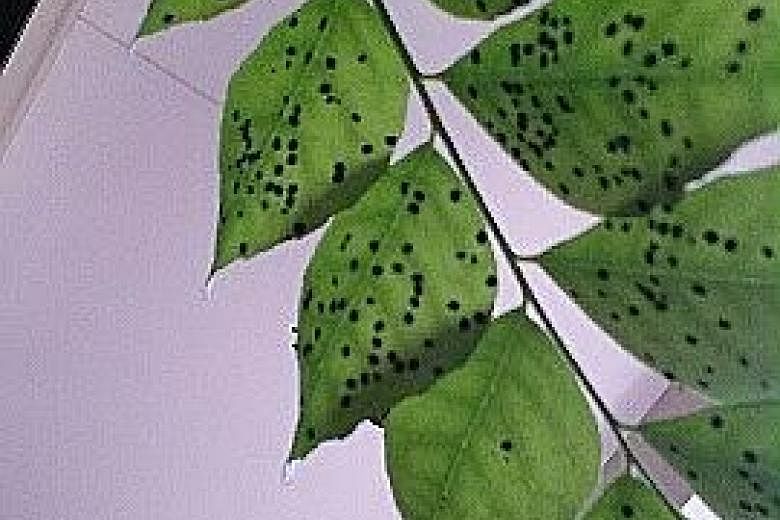Prune diseased plant parts to encourage new growth
The leaves on my Dracaena tree have burnt marks and yellow dots. The tips of the leaves have dried up and dark sap has flowed out of the stem. My indoor plant also has burnt marks on the leaves and tips. Why does this happen and how can I treat the plants?
Mabel Khung
Your Dracaena may be infected by a bacterial or fungal disease. Without a laboratory test, it can be difficult to ascertain the exact cause.
For now, cut away infected portions of the plant, in particular the parts that are exuding sap which is dark and smelly. The sap is an indication of an issue caused by pathogenic bacteria. Let the wounds heal and, hopefully, the new growth will be healthy.
Take a close look at the leaf spots - do they have a yellow halo with a central, dry, papery tissue? If so, this may indicate a fungal infection.
Infected leaves will need to be pruned and a fungicide, such as captan or benomyl, needs to be applied several times.
It is important to grow the plant under its preferred growing conditions. Your Dracaena can be grown under direct light and the soil should be well-draining and not waterlogged. Air circulation can help to reduce the incidence of leaf spots. Avoid growing the plant in an area crowded by other plants.
Your indoor plant is likely a Homalomena. The leaves' yellow edges and patches can be due to a range of reasons. Did you grow your plant in a windy and/or sunny area? Excessive wind can dry the plant out.
Excessive exposure to strong intense sunlight also leads to sunburn of the leaves. The plant prefers to grow in a humid, shaded and protected location. Keep the root zone of this plant moist at all times and do not let it dry out completely.
Also, avoid over-fertilising the plant. Unabsorbed, residual fertiliser salts can cause leaves to burn. For such a case, it may be necessary for you to water the root zone thoroughly to flush out the fertiliser salts.
Prune away affected leaves and allow new leaves to be produced. Withhold fertiliser application for a while. When in doubt, apply fertiliser in a smaller dose than the recommended amount.
Sap of Indian Spurge Tree is poisonous
What is the name of this plant and how do I care for it? My friend's late grandmother used its sap to treat corns. Will the sap cause skin problems?
Mary Lim
The plant appears to be the Indian Spurge Tree. Its botanical name is Euphorbia neriifolia and it is from a genus of plants that is known to exude poisonous sap.
Its sap, on contact with skin, can cause blistering. However, the latex is said to be used externally to treat haemorrhoids and remove warts. It is best to seek the advice of a herbalist before attempting to self-medicate using plants with toxic principles.
Some large nurseries may have this plant for sale. Take along a clear photograph of it to show nursery staff what you are looking for.
It can be propagated from stem-cuttings. Cut a section of the stem and use some charcoal powder to dab the cut end to stop sap flow. Let the wound heal for about a week before planting it in a well-draining sandy soil mix for the cutting to root.
Tip: New Ixora finlaysoniana has fragrant, white blooms
Most people are familiar with the Ixora cultivars, which are common garden landscape shrubs with showy bunches of red, yellow, pink or white flowers, though they are hardly fragrant.
The larger ones produce flowers that are rich in nectar and attract butterflies.
Ixora finlaysoniana is a relatively new introduction that produces sizeable bunches of white, fragrant flowers. It is a new Ixora species you can add to your outdoor garden.
It is a sun-loving shrub and should be grown outdoors under direct sunlight in fertile, well- draining soil.
Chemical pesticides for persistent infestations
Pests constantly reappear on my trees and bushes, even though I have sprayed the plants with insecticide. What can I do to get rid of them permanently?
Lee Lee Lin
Your plant appears to be infested with mealy bugs, a type of sucking insect pest. For persistent infestations, you may want to use chemical pesticides, such as cypermethrin, instead of naturally derived ones such as neem oil.
When applying pesticides, ensure that you cover the plant thoroughly, including the growing tips of the plant, the undersides of leaves and the tight areas between the leaf stalk and stems.
It is necessary to repeat pesticide applications at least weekly to ensure the infestation is reduced to a manageable level.
You may also need to switch your pesticides to avoid the development of pesticide resistance in pests.
When applying chemical pesticides, wear appropriate protective gear and keep young children and pets away from sprayed plants.
Fungal disease causing black spots
My potted curry plant is growing well, but there are many black spots on the underside of the leaves. What should I do to get rid of the spots?
Shariff Sulaiman
Your curry plant is likely being infected by a fungal disease. For now, prune away infected foliage and dispose of them. Do not compost the leaves as that can lead to the spread of the disease.
When new foliage emerges, spray the plant with a contact fungicide, such as captan. It is important you cover the plant thoroughly with the fungicide solution. Repeat the application at least once a week to ensure the disease is controlled.
When applying chemicals, you will need to observe the withholding period - the duration between chemical application and harvest. Ensure your plant is getting sufficient sunlight and air circulation to reduce the incidence of fungal diseases.
•Answers by Dr Wilson Wong, a certified practising horticulturist and founder of Green Culture Singapore (www.greenculturesg.com). He is also an NParks-certified park manager.
•Have a gardening query? E-mail it with clear, high-resolution pictures, if any, and your full name to stlife@sph.com.sg
